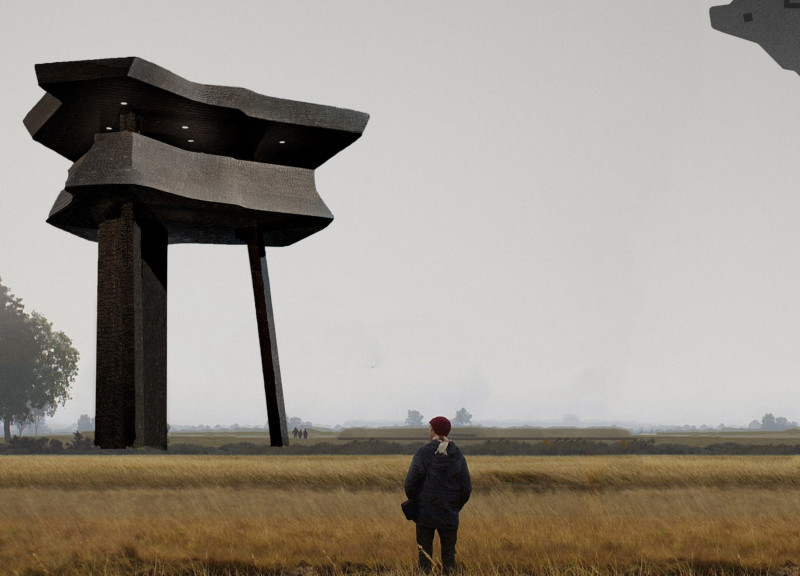5 key facts about this project
At its core, the project functions as a multi-use facility, accommodating both residential and commercial spaces. This dual-purpose approach enhances the livability of the surrounding area, offering residents convenient access to essential services and creating a vibrant community atmosphere. The project successfully fulfills its role by prioritizing accessibility, sustainability, and user experience, ensuring that it meets the needs of diverse demographics.
The design showcases a careful selection of materials that contribute to its overall character. The use of locally sourced brick is significant, providing not only an aesthetically pleasing façade but also enhancing the building’s thermal performance and durability. Large expanses of glass are incorporated to facilitate natural light, fostering a sense of openness and connection to the outdoors. The thoughtful integration of green spaces—both on the rooftops and along the pedestrian pathways—highlights the project's commitment to environmental sustainability and enhances the overall aesthetic appeal.
One of the unique aspects of this architectural design is its focus on biophilic principles, creating a space that promotes a strong connection between inhabitants and nature. Indoor gardens and strategically placed flora not only improve air quality but also contribute to the well-being of the occupants. This emphasis on the relationship between architecture and nature is increasingly relevant in today’s urban contexts, offering a respite from the hustle and bustle of city life.
The architectural layout is equally compelling. Open floor plans facilitate flexibility, allowing spaces to adapt to various usages over time. In addition, the vertical circulation is carefully arranged to optimize flow and accessibility, catering to pedestrian traffic while ensuring an efficient navigation of the building's different levels. Architectural sections reveal a commitment to inclusivity, with design elements that comply with accessibility standards to ensure that the facility is usable for everyone.
Significant attention has been paid to the integration of technology within the architectural framework. Smart building systems are employed to enhance energy efficiency and user comfort, reflecting ongoing trends in contemporary design. These systems enable occupants to manage lighting, climate control, and security measures seamlessly, embodying a forward-thinking approach that is vital in modern architectural design.
The project's contextual response is another noteworthy feature. Situated within an urban setting, the design takes cues from the surrounding architectural language while establishing its unique identity. This silos the project from mere replication of adjacent buildings, instead embracing its distinctiveness. The integration of local cultural elements into the design narrative further elevates the project, fostering a sense of pride and ownership among the community.
Through a systematic analysis of the architectural plans and sections, one can observe the meticulous attention to detail that informs this design. Each element has been purposefully chosen and arranged to create a cohesive whole, providing insights into the project’s broader conceptual framework. It is evident that the architects have considered not only the immediate functionality of spaces but also the long-term impact on the urban landscape.
As the exploration of this architectural design project reveals, there are numerous layers of thought behind its creation. Engaging with the comprehensive project presentation can further elucidate the intricacies of the architectural plans, sections, designs, and innovative ideas that shape this vibrant and significant addition to the city. Readers are encouraged to delve deeper into these elements to fully appreciate the sophistication and practical implications woven into the fabric of this project.


























